sd evans Quilts

Friend and fellow Seattle Modern Quilt Guild member Season Evans has a beautiful new collection of quilts. I am so in love with these quilts and was thrilled to hear that she will have an opening reception showcasing these pieces at Drygoods Design on Saturday, October 12 at 6pm. She was sweet enough to answer my prying questions about her work, and thought we’d all enjoy what she has to say.
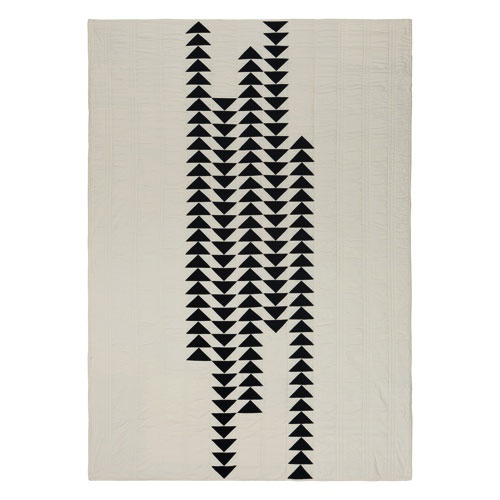
Migration, Flying Geese Variation
Blair- What immediately came to my mind when I saw your new collection of quilts were the words “soft” and “strong“. I love that they are quiet in their palette and design, yet graphically strong. How did you go about developing these new quilts? Are you a sketcher and a planner, or do you prefer to start sewing and playing with design all at the same time?
Season- I like your use of the words ‘soft’ and ‘strong.’ I’ve never quite articulated it that way. I’m attracted to juxtapositions and I tend to always have that in mind when I’m designing a quilt. I am definitely a planner. I like control – or, at least, starting out in control. I always draw out my quilts to scale on graph paper. Then, I cut and start constructing. Usually, at the constructing stage do I allow myself to ‘let go’ a bit. The “Red + White” quilt (pictured below)started out a completely different quilt on paper. I cut out all of the triangles, pieced most of them together, and then started to put them on my design wall. Just putting a few of the triangles on the wall made me realize I was heading in the wrong direction. So, I started over with the new pieces. The design wall can be a frightening and liberating quilting tool. I was constantly questioning the new design (with the R+W quilt) versus the original plan but I made the right choice at the time. There’s always a chance I’ll go back to the original. Plus, I have the rest of the pieces cut out.
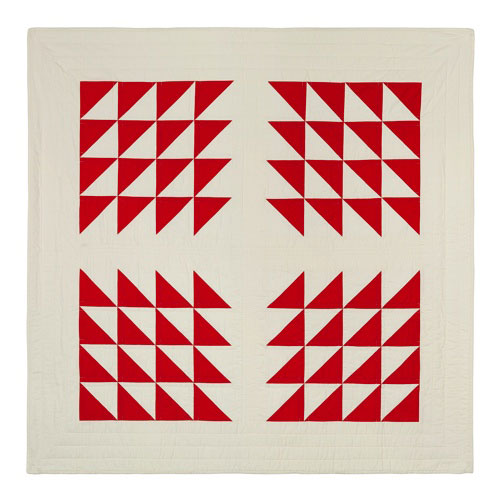
Red and White, diagonal triangle variation
Blair- I love the textiles you use for your quilts… the yukata cotton and linens in particular, they really give so much texture to the surface of your work. Do you have a large collection of fabrics? Or does the fabric- when you acquire it- help inspire the design?
Season- Texture has become increasingly important to how I think about quilts. I always want them to be soft enough to use; however, with my minimal use of color, I am always looking for more depth or interest, which the texture provides without adding too much more to the look of the quilt. Generally, I start out thinking about color. From there, I look for fabrics that fit my plan for the quilt and my personal taste. I don’t keep a stash of fabrics. I do have some extra fabrics and a lot of scraps but I don’t plan my quilts from them. For me, fabrics tend to come with a connotation. If I buy fabrics without having project in mind, the connotation becomes that moment. Then, as they sit in my stash, that connotation changes, then I change, and that may not match the idea I have for my next quilt.
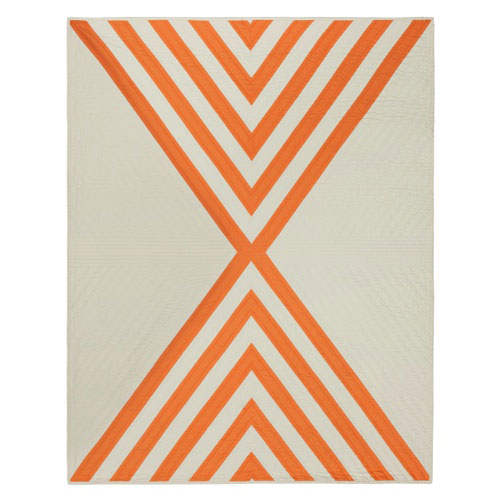
Library Steps, courthouse steps variation
Blair- There is a lot of negative space in your quilts, which can be made really special with the quilting you choose. Do you quilt all your own quilts?
Season- I do quilt my own quilts. I enjoy that part of the process but I find it one of the most difficult choices to make in designing a quilt. Because of the amount of negative space that I use in my quilts, I find that an all over quilt design usually doesn’t fit my style. I try to use designs that highlight the graphics of the quilt as well as adding another layer of texture. The quilting a struggle for me because both the negative space and the design are both so important and I try to balance those in the quilting.
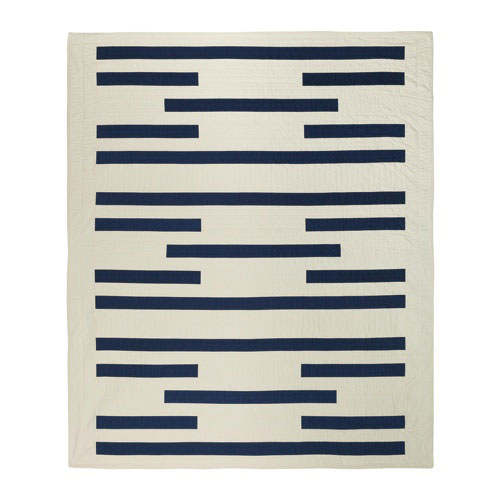
Gravity, roman stripes variation
Blair- Where do you quilt, do you have a space that’s all yours? Or a shared space?
Season- I’ve always quilted in a shared space. I used to dream of having a space of my own (and I’ll admit sometimes I still do) but I like being around my family. We live in a older craftsman house with a lot of small rooms – we essentially have two small living rooms. We use the second living room as a space to share and create. My husband has his desk and computer and my kids have all of their crafts and games in there, too. It’s nice to have my daughters around when I’m working and they certainly have opinions about the quilts! I’ve begun to take up more and more of that room: a long folding table and one of the closets. My favorite part of the room is the picture rail. I hang my design wall there as well as finished quilt tops. It gives me a lot of room to take a step back and really see the quilt as a whole.
Blair- One of my many favorite aspects of your quilts are their backs. They are a surprise “punch” of pattern and color and I love that they work in contrast so well to the fronts. I know I often struggle with what the back of my quilts should be, sometimes I even feel like I’m designing a whole new quilt just for the back! What’s your design process for this aspect of your quilts?
Season- I, too, feel like I’m designing a new quilt on the back! The quilt backs are where I let myself lose a little bit of control. I always start with color, particularly the main color of the quilt top, and then build out from there. For the “Migration” quilt, I started with the vintage yukata cotton. The horizontal blue stripe was a good contrast to the vertical lines of the front. From that print I pulled the browns, etc. The back is also where I add a lot of textured fabrics. I generally just piece larger blocks of color together like Tetris or a puzzle until everything seems to fit.
Blair- Who and what are your inspirations?
Season- I grew up in Southeastern Pennsylvania, surrounded by Mennonite and Amish communities. My grandmother taught me to sew when I was about eight but I didn’t teach myself to quilt until I was in college. I went to college in rural Pennsylvania, where quilts could be bought out of barns and roadside stands. The juxtaposition of simple beauty and utilitarian craftsmanship of those traditional quilts and quilting style was very influential and continues to be. After college, I left quilting for writing, but returned to quilting when I had my oldest daughter. I was living in Philadelphia at the time and still thought I could only quilt with calicos. I discovered Denyse Schmidt about the same time that a Gees Bend exhibit came to the Philadelphia Museum of Art. That was when I realized I was in a bit of quilting bubble – so much more was happening with quilting, fabric, and their relationship to art and design. When I moved to Seattle, I discovered the Modern Quilt Guild. (My local chapter is a constant source of inspiration – I am fortunate to be able to sew with so many talented quilters.) I’m continually inspired modern quilters/quilt artists: Yoshiko Jinzenji, Maura Ambrose, Luke Haynes, Lindsay Stead, Meg Callahan, and Kathryn Clark are people who can do amazing things with fabric. Yet, when I’m thinking about a quilt design I can’t help but go back to my more traditional influences.
Season’s quilt collection is available on her site, SD Evans quilts. If you can, be sure and see her quilts up close and personal at Drygoods Design on Saturday, October 12.
Thank you so much Season!
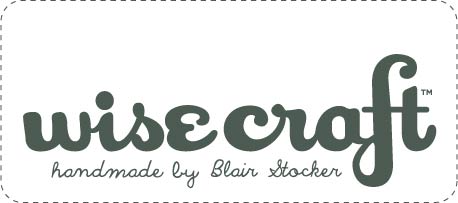
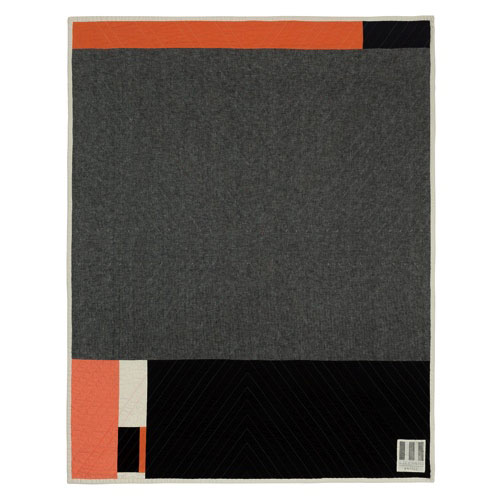
Debbie
October 8, 2013 at 10:43 amI thoroughly enjoyed this “conversation” and appreciate your sharing it. Season’s quilts are so lovely and inspirational.
lisa s
October 8, 2013 at 9:55 pmOH these are gorgeous.
thanks for this.
Caz@theaccidentalquilter
October 10, 2013 at 11:12 pmThanks for sharing. Season’s quilts are definately a feast for the eye.